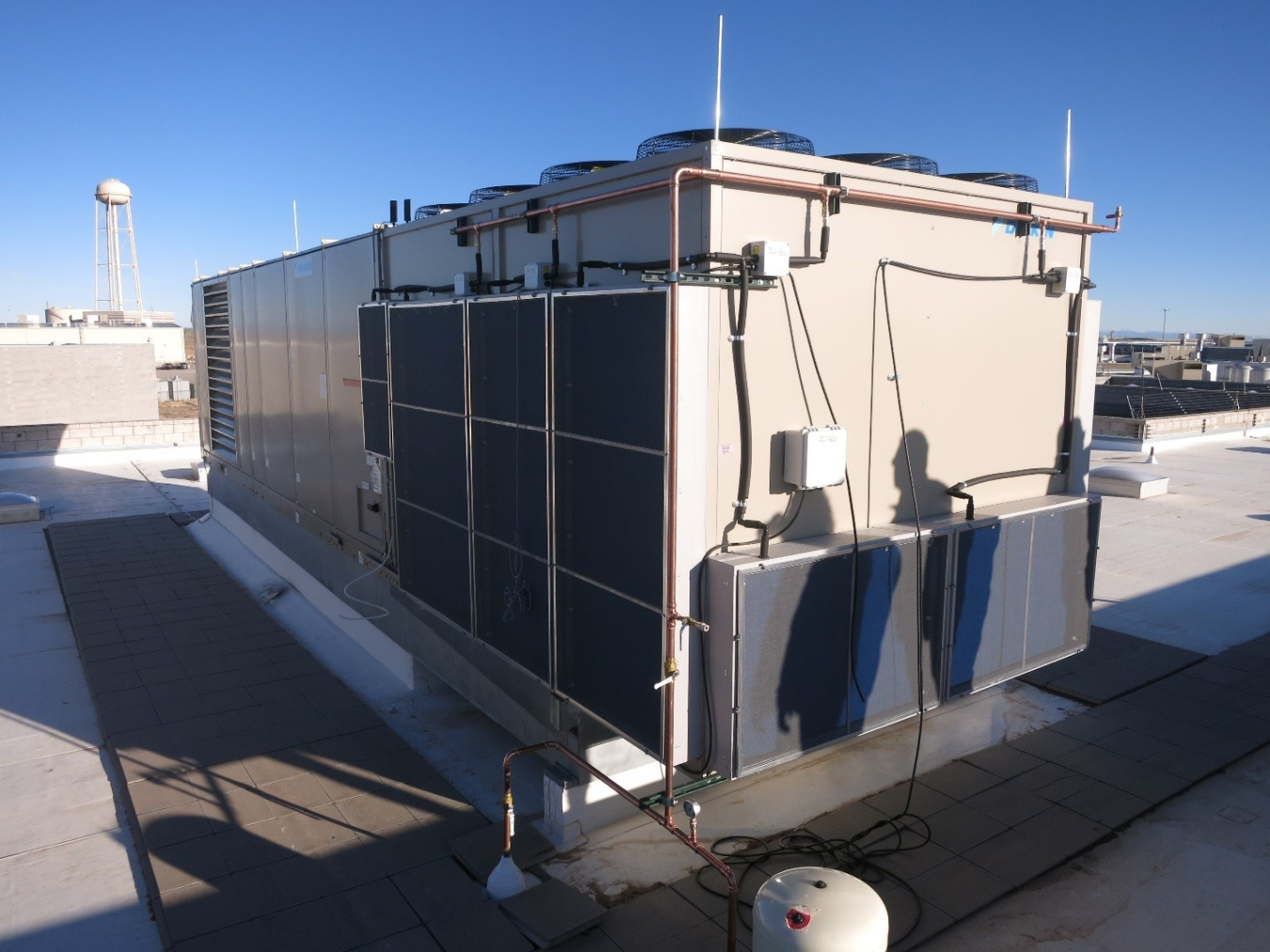
Storage system at the Bernalillo County Metropolitan Detention Center. Photo courtesy of EMNRD, 2019.
Paying for energy efficiency upgrades that save money in the long term can be difficult for local governments that are already stretched thin in the short term. Energy Savings Performance Contracting (ESPC)—a budget-neutral approach to making efficiency improvements by using energy savings to pay for projects over time—can be a financial solution to help local governments reduce energy and water use and increase their operational efficiency.
New Mexico’s Energy, Minerals, and Natural Resources Department (EMNRD) sought to expand the use of ESPC across the state’s local governments. With a competitive financial investment from the U.S. Department of Energy’s (DOE’s) State Energy Program within the Office of Energy Efficiency and Renewable Energy, EMNRD created the Local Energy Efficiency Performance (LEEP) pilot program. LEEP connected local governments to third-party professional engineers competitively selected by EMNRD to act as independent reviewers of energy audit findings, ESPC contracts, and other steps in the ESPC process.
Four local governments participated in the LEEP pilot project. As reported by the state, the energy audits resulted in a total of 4.7 million square feet audited, $20.8 million in ESPC contracts executed, and an estimated, potential annual savings of more than $1.2 million.
Each local government began the LEEP process by selecting an energy service company from a prequalified list created through a prior DOE grant. The list contained seven qualified energy service companies with prior ESPC experience and positive reviews. The selected energy service company then conducted an audit to identify energy savings opportunities such as efficiency upgrades and renewable technologies to help reduce the energy costs of local government buildings.
EMNRD selected engineering firms to act as the third-party reviewers to provide expertise and advice to help guide local governments through the ESPC process. The third-party reviewer was a neutral contributor that provided direction to not only the municipalities, but everyone involved in the LEEP process. The third-party reviewer’s involvement and oversight also encouraged high-quality work.
A New Mexico state energy official said, “The LEEP project brought an accountability element to performance contracting in New Mexico, increasing the interest in energy efficiency for government facilities going beyond local governments. The third-party review aspect to this program created quality assurance and acceptance by decision makers and financial institutions.”
To continue the LEEP program’s success after the State Energy Program financial award ended, EMNRD created a 1% fee on the entire project cost to cover the third-party review process. This fee ensures the project remains revenue-neutral, providing EMNRD with long-term resources to continue to deliver third-party review services to other governmental entities interested in ESPC.
Since 2015, EMNRD has moved beyond the pilot stage and completed $181.2 million in ESPC projects, surpassing the original goal of $50 million, and a total annual energy cost savings of $7.5 million has been achieved. The future of LEEP is bright—New Mexico issued requests for proposals in 2019 for updating the prequalified list of energy service companies and for third-party review services. Eight energy services companies are now on New Mexico’s prequalified list and four professional engineering companies were selected to continue to support ESPC project oversight and improve energy cost savings throughout the state’s building infrastructure.
EERE’s State Energy Program provides funding and technical assistance to states, territories, and the District of Columbia to enhance energy security, advance state-led energy initiatives, and maximize the benefits of decreasing energy waste. The State Energy Program emphasizes the state’s role as the decision maker and administrator for program activities tailored to their unique resources, delivery capacity, and energy goals.
